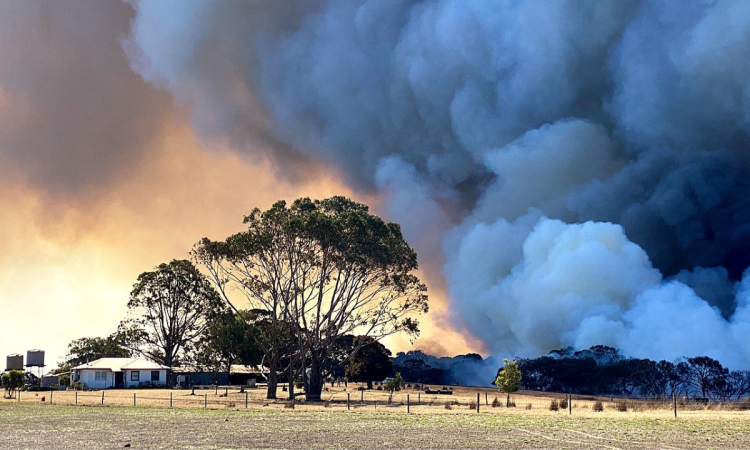Summer’s here, and that means there’s one task you can’t keep putting off. No, it’s not shopping for new bathers – it’s getting prepared for bushfires. Even if you live in Adelaide, you’re not immune from risk. Here’s everything you need to know to stay safe.
Sorry, but complacency isn’t an option
Thanks to El Nino and the effects of climate change, we’re set for another long, hot and dry South Australian summer. That means a whole lot of great beach weather, but also a higher risk of bushfires – something everyone needs to be prepared for.
Unfortunately, one in five South Australians living in high-risk areas are without a bushfire plan. Even worse, one in three either underestimate their area’s risk or are oblivious to it. Think you’re safe in the suburbs? Think again! Just some of the Adelaide areas with high bushfire risk are Rostrevor, Burnside, Golden Grove, Magill and Aberfoyle Park.
The invisible threat: Ember attacks
The majority of homes are lost not to flames, but to ember attacks – and they can happen kilometres away from the actual fire. Those sneaky little embers can ignite anything from leaf litter in gutters to the rubbish under your verandah, causing a serious fire in your roof space or under your house before you even smell smoke. “You may never see flames on the day you lose your house,” says Country Fire Service (CFS) Director Community Risk and Resilience, Alison May.
Don’t procrastinate, prepare!
Alison says she can relate to all the people who know they need to plan and prepare for a fire, but never quite get round to doing it. “Denial is human nature. Bushfires are uncomfortable to think about, so we give ourselves every excuse not to think about them,” she says.
“But the consequences of doing nothing and not preparing can be beyond catastrophic. A little bit of time spent planning now can make all the difference if the worst happens later. We hear time and time again that one of the biggest emotions people have after a fire is regret and shame that they didn’t prepare.”
Five ways to be prepared for fire season
If you’re starting to get a little scared, it’s OK – the CFS has got all the detailed information and good advice you need to prepare your home for fire season here. And we’ve even broken it down for you into five easy steps:
- Clear around your home – that means getting rid of vegetation and rubbish, cleaning the gutters, and filling the gaps in the walls and roof where embers could enter.
- Pack an emergency kit with essential items (including scanned documents on a USB, photos, passports, jewellery, prescriptions and insurance papers) and keep it in a handy place.
- Find out where your closest Bushfire Safer Place is, and how to get there.
- Complete your online five-minute Bushfire Survival Plan (don’t forget about your pets!) and then share it with everyone in your household.
- Check the fire danger rating each day and stay informed using more than one source of information in case a fire starts near you.
It can happen anywhere
Obviously, the danger of bushfires doesn’t go away when you leave your house. However, South Australians seem to develop a blind spot to danger when they get out and about. Around half of SA travellers – including workers who commute – don’t check the fire danger rating for their destinations. And two-thirds of South Australians believe they don’t need a bushfire survival plan if they’re staying away from home.
Of course, the bushfire danger can actually be higher where you’re travelling to, says Alison, especially if you’re taking a road-trip from the city to regional SA. Luckily, there’s the handy free Alert SA app you can download that will tell you the bushfire risk of wherever you’re headed, and alert you to any risks along the way – not just bushfires, but also other useful things like car accidents to avoid.
As for a vacay bushfire plan, there’s all the information you need to prepare one here (it’s not hard). Top tips include packing woollen blankets, a first aid kit and battery-powered radio in the car. It’s also worth checking where the nearest Bushfire Safer Place to your holiday spot is, and changing up your travel plans if the fire risk is too extreme or catastrophic.
Hear more hot tips from Alison about surviving and recovering from a bushfire, as she spills to Matt, Anna and Tim on the Hot Topics podcast.
A reminder to stay safe
To give travellers an extra nudge to be prepared this bushfire season, the State Government has launched a series of radio, TV, social media and outdoor ads. It’s part of the Be Bushfire Ready campaign aimed at keeping locals and visitors safe.
The Government has also invested $26.7 million to assemble SA’s largest ever aerial firefighting fleet of 31 aircraft – five more than last year. The new aircraft include two Blackhawk helicopters, two Single Engine Air Tankers and a Multi-Mission Machine to protect South Australians and defend their properties this bushfire season.
Socialising can save lives
Among the many tips for staying safe this bushfire season you’ll find on the CFS website, Alison says the most important one is actually to get to know the people in your local area.
“Something we’ve learned from disaster after disaster is that knowing and communicating with your family, neighbours and community gives you the best chance of surviving and recovering in a disaster,” she says.
“Studies from Hurricane Katrina and this year’s Hawaii wildfires showed that survival and recovery was all about what the community did and how they came together. We call that social capital. Invest in that social capital all year round, because that’s the most valuable thing you can do.”
You can find all the information and tips to be prepared this bushfire season here.

















